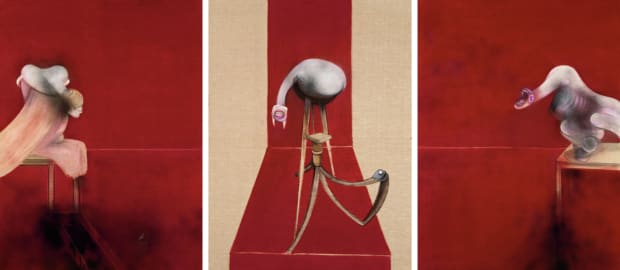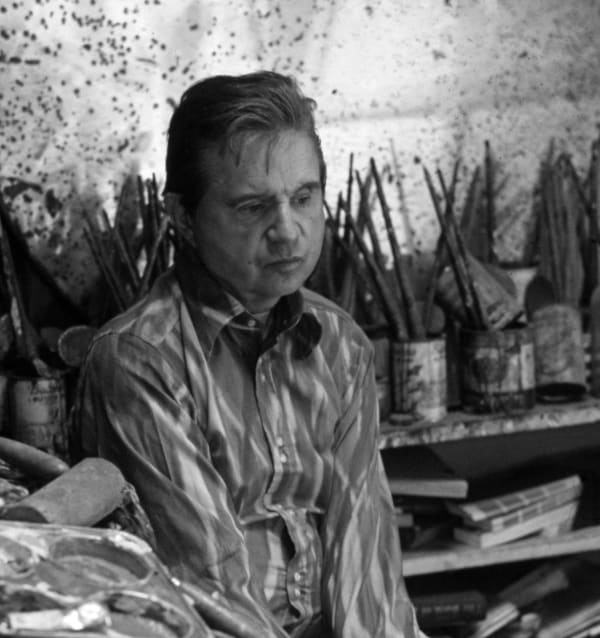The work revisits his breakthrough painting from 1944, Three Studies for Figures at the Base of a Crucifixion, which had shocked postwar Britain with its primal energy and sense of despair. By the late 1980s, Bacon was an international figure, his reputation secure, yet he remained drawn to the same imagery of anguish and isolation that first made his name. Reworking the triptych allowed him to confront his own history, to measure the distance between the furious immediacy of youth and the cold clarity of age. Exhibited at the Tate soon after its completion, the painting was received as both a reckoning and a final statement, an artist facing the beginning and end of his career within a single, unflinching vision.
 Francis Bacon, Second Version of Triptych 1944, 1988.Oil and aerosol paint on canvas.Triptych.©The Estate of Francis Bacon, Image reproduced for educational purposes only.
Francis Bacon, Second Version of Triptych 1944, 1988.Oil and aerosol paint on canvas.Triptych.©The Estate of Francis Bacon, Image reproduced for educational purposes only.


